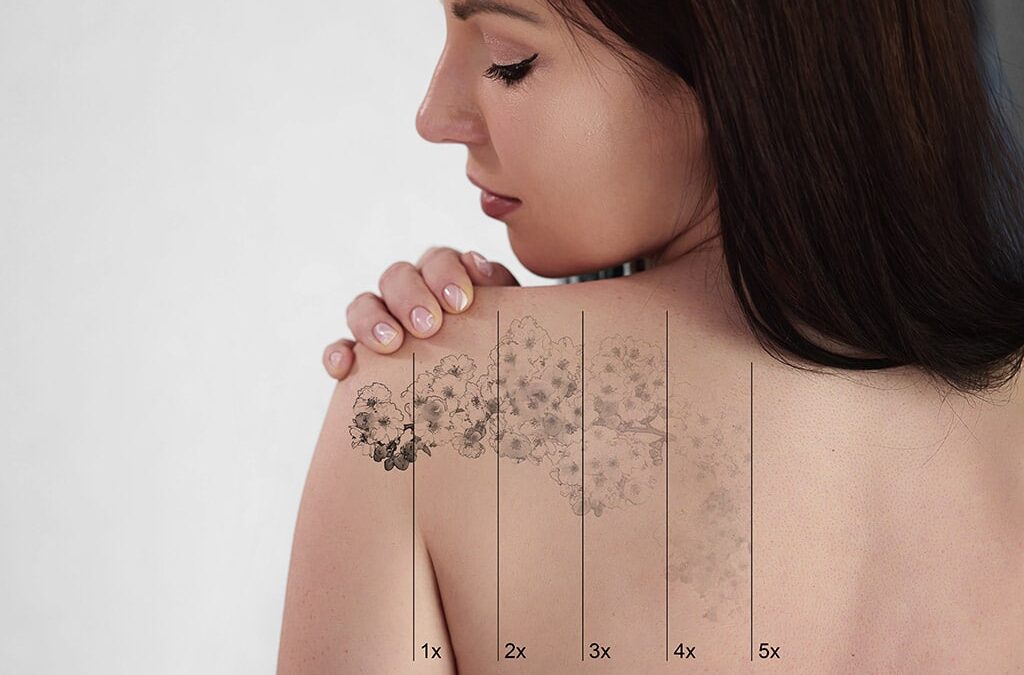
by laraibnaeem2005 | Oct 6, 2025 | Health
If you’re thinking about getting rid of an unwanted tattoo, one of the first questions on your mind might be how do I know if I’m a good candidate for laser tattoo removal? This treatment has become increasingly popular for its ability to effectively fade or erase tattoos with minimal downtime. However, not everyone is ideally suited for the procedure. Factors such as skin type, tattoo characteristics, and overall health play a critical role in determining whether laser tattoo removal will be both safe and effective for you. This article will guide you through the essential considerations to help you evaluate if laser tattoo removal is right for you.
What Is Treatment And How It Works?
Laser tattoo removal in Dubai(إزالة الوشم بالليزر في دبي) uses highly concentrated light beams to break down the ink particles beneath the skin. These fragmented particles are then naturally eliminated by the body’s immune system over several sessions. The process is generally safe and effective, but the outcome depends largely on individual factors.
People often ask, does the size or color of my tattoo affect my candidacy? Absolutely. Darker inks like black or blue respond better to laser treatment than lighter colors such as yellow or green. Larger tattoos may require more sessions, and tattoos with multiple colors can sometimes be more challenging to remove completely. Additionally, the depth and quality of ink used influence treatment success.
Importance Of Treatment:
Understanding the importance of treatment suitability is crucial before pursuing laser tattoo removal. Attempting the procedure without being a good candidate may result in poor results, unnecessary side effects, or skin damage.
Some frequently asked questions include:
-
Can people with darker skin tones undergo laser tattoo removal? Yes, but they require specialized laser types to minimize risks like pigmentation changes.
-
Does health status impact treatment? Yes, certain skin conditions, medications, or compromised immune systems may affect healing and safety.
Knowing these factors ahead of time helps set realistic expectations and ensures your safety throughout the treatment process.
Types Of Treatment:
There are various laser technologies used in tattoo removal, each suited for different skin and tattoo types:
-
Q-switched Nd:YAG Laser: Effective on darker inks and safer for darker skin tones
-
Picosecond Laser: Offers faster results with shorter pulses, better for multicolored tattoos
-
Alexandrite Laser: Ideal for lighter skin tones and certain colors
A common question is, which laser type works best for my tattoo? The answer depends on your unique skin tone and tattoo characteristics, which is why a thorough consultation is important.
Preparation And Aftercare:
Proper preparation and aftercare enhance treatment safety and effectiveness. Here’s what ideal candidates should do:
-
Avoid sun exposure before and after sessions
-
Keep the tattooed area clean and moisturized
-
Avoid tanning beds or self-tanners
-
Follow all instructions for skin care and healing post-treatment
Many wonder, how important is pre-treatment care? It is critical. Healthy skin responds better to laser energy and heals faster, reducing complications like scarring or pigmentation changes.
Ideal Candidate:
The ideal candidate for laser tattoo removal typically:
-
Has a tattoo at least 6–8 weeks old (fully healed)
-
Maintains healthy skin without infections or active skin diseases
-
Has realistic expectations about the fading process
-
Can avoid sun exposure before and after treatment
-
Has no contraindications such as certain medications or medical conditions
How To Choose A Right Clinic?
Choosing a clinic with experience in treating diverse skin types and tattoo colors is essential. Look for:
-
Providers who offer thorough consultations
-
Access to multiple laser technologies
-
Clear communication about risks, benefits, and expected results
-
Proper hygiene and safety standards
Risks:
Possible risks of laser tattoo removal include:
-
Temporary redness, swelling, or blistering
-
Changes in skin pigmentation (hyper- or hypopigmentation)
-
Scarring, though rare with proper care
-
Incomplete removal, especially with certain ink colors
Understanding these risks helps in making an informed decision.
Benefits:
Laser tattoo removal(إزالة الوشم بالليزر) offers:
-
Non-invasive and precise treatment
-
Gradual fading with minimal downtime
-
Ability to target specific colors and areas
-
Improved confidence and satisfaction by removing unwanted tattoos
Frequently Asked Questions (FAQs):
Is laser tattoo removal painful?
Most describe it as a sensation similar to snapping rubber bands; discomfort varies.
How many sessions will I need?
It depends on tattoo size, color, and skin type; multiple sessions are typical.
Can laser removal completely erase all tattoos?
Some tattoos fade significantly but may not disappear entirely.
Is there any age limit?
Usually, candidates must be adults; check local guidelines.
Conclusion:
If you’re wondering how do I know if I’m a good candidate for laser tattoo removal? the answer lies in evaluating your skin health, tattoo characteristics, and lifestyle factors. Being a good candidate means having healthy, healed skin; realistic expectations; and the willingness to follow preparation and aftercare guidelines. Selecting the right clinic and understanding the types of treatment and potential risks also play a major role in successful removal. With the right approach, laser tattoo removal can offer an effective solution to reclaim your skin and confidence.
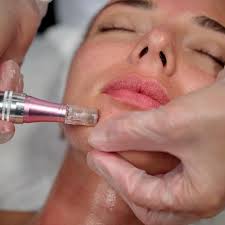
by laraibnaeem2005 | Oct 4, 2025 | Health
Maintaining well-hydrated skin is essential for a youthful, radiant appearance. Many individuals wonder can mesotherapy improve skin hydration and help address dryness, dullness, and loss of elasticity. Mesotherapy is a minimally invasive procedure that delivers a mixture of vitamins, hyaluronic acid, minerals, and amino acids directly into the mesoderm, the middle layer of the skin. This targeted approach nourishes the skin from within, stimulating hydration, collagen production, and tissue regeneration for a healthier, rejuvenated look.
What Is Treatment And How It Works?
Mesotherapy treatment in Dubai(علاج الميزوثيرابي في دبي) works by delivering nutrient-rich solutions directly into the skin’s deeper layers. These solutions often contain hyaluronic acid, a naturally occurring substance that binds water molecules and enhances skin moisture. Vitamins and amino acids complement this effect by supporting cellular metabolism and repair. The procedure involves multiple microinjections spaced across the treatment area, allowing for precise and uniform delivery. By stimulating fibroblasts and promoting collagen synthesis, mesotherapy enhances the skin’s natural ability to retain moisture, improve elasticity, and maintain a supple texture.
Importance Of Treatment:
Understanding the importance of mesotherapy for skin hydration is essential for appreciating its benefits. Dehydrated skin can appear dull, rough, and more prone to fine lines and wrinkles. Topical moisturizers often fail to reach the deeper skin layers where hydration is most needed. Mesotherapy bypasses this limitation by directly introducing hydrating and nourishing compounds to the dermis. Regular sessions help restore the skin’s water balance, strengthen its barrier function, and improve overall texture. Consistent treatment ensures cumulative benefits and long-lasting results.
Types Of Treatment:
Mesotherapy can be customized based on individual hydration needs and skin concerns:
-
Hydrating Mesotherapy: Focuses on hyaluronic acid and water-binding vitamins to restore skin moisture.
-
Anti-Aging Mesotherapy: Combines hydration with vitamins C, E, and amino acids to reduce fine lines and enhance radiance.
-
Brightening Mesotherapy: Includes antioxidants and vitamins to improve dull, dehydrated skin.
-
Combination Treatments: Can be paired with microneedling or chemical peels for enhanced absorption and cumulative benefits.
Selecting the right type ensures that the treatment addresses both hydration and the patient’s additional skin concerns.
Preparation And Aftercare:
Proper preparation and aftercare are essential to maximize the hydration benefits of mesotherapy:
Before treatment:
-
Avoid anti-inflammatory medications or blood-thinning supplements to reduce bruising risk.
-
Ensure skin is clean, well-hydrated, and free from irritation.
-
Inform the provider about allergies, medications, or prior treatments.
-
Limit alcohol and smoking at least 24 hours before the session.
After treatment:
-
Avoid rubbing, massaging, or applying pressure to treated areas for 24 hours.
-
Use gentle skincare products and avoid harsh chemicals or exfoliants.
-
Protect skin from direct sunlight and extreme temperatures.
-
Attend follow-up sessions as recommended to maintain optimal hydration results.
Following these steps ensures the injected nutrients are fully absorbed and reduces the likelihood of side effects.
Ideal Candidate:
The ideal candidate for Mesotherapy treatment(علاج الميزوثيرابي) to improve skin hydration includes:
-
Individuals with dehydrated, dull, or aging skin seeking non-surgical rejuvenation.
-
Patients experiencing early signs of aging such as fine lines or loss of elasticity.
-
Those willing to commit to a series of treatments for cumulative and long-lasting results.
-
Individuals with realistic expectations regarding treatment effects and recovery.
-
People without active infections, severe skin conditions, or allergies to treatment components.
Being an ideal candidate ensures safety, comfort, and the most effective results from the treatment.
How To Choose The Right Clinic?
Selecting a qualified clinic is crucial for safe and effective hydration treatments:
-
Ensure the clinic employs experienced and trained mesotherapy professionals.
-
Confirm that high-quality, sterile solutions containing hyaluronic acid, vitamins, and amino acids are used.
-
Review before-and-after images or testimonials of patients with similar concerns.
-
Discuss a personalized treatment plan, including session frequency, treatment type, and expected results.
-
Verify that the clinic provides clear guidance on preparation, aftercare, and follow-up sessions to maximize benefits.
A professional clinic ensures optimal technique, safety, and effective nutrient delivery.
Risks And Benefits:
Potential risks include:
-
Mild redness, swelling, or bruising at injection sites.
-
Temporary stinging, tenderness, or irritation.
-
Rare allergic reactions depending on solution ingredients.
-
Small bumps or temporary unevenness that typically resolve quickly.
Benefits include:
-
Improved skin hydration, elasticity, and suppleness.
-
Reduction in fine lines and dryness.
-
Enhanced radiance and overall skin health.
-
Minimally invasive treatment with minimal downtime.
-
Long-lasting, natural-looking improvements when sessions are scheduled consistently.
Understanding risks and benefits allows patients to make informed decisions and set realistic expectations.
FAQs:
Q: How soon will skin feel more hydrated after mesotherapy?
A: Many patients notice improved moisture and smoothness within a few days, with optimal results after several sessions.
Q: How many sessions are recommended?
A: Typically, 3-6 sessions spaced 2-4 weeks apart are advised, followed by maintenance sessions as needed.
Q: Is the procedure painful?
A: Most patients experience mild discomfort during injections, often managed with topical numbing agents.
Q: Can mesotherapy be combined with other treatments?
A: Yes, it can complement treatments such as microneedling, chemical peels, or laser therapy to enhance hydration and skin rejuvenation.
Q: How long do results last?
A: With proper follow-up and maintenance, hydration improvements can be long-lasting, supported by healthy lifestyle habits.
Conclusion:
In conclusion, understanding can mesotherapy improve skin hydration highlights its ability to deliver targeted nutrients directly into the skin, promoting moisture retention, elasticity, and a radiant appearance. By using hyaluronic acid, vitamins, and amino acids, mesotherapy nourishes the skin from within, addressing dryness and early signs of aging. Ideal candidates are those seeking non-surgical, minimally invasive hydration solutions who are committed to a series of sessions and proper aftercare. Choosing a qualified clinic ensures safe, effective treatment and maximizes the cumulative benefits of improved skin hydration, texture, and overall appearance.
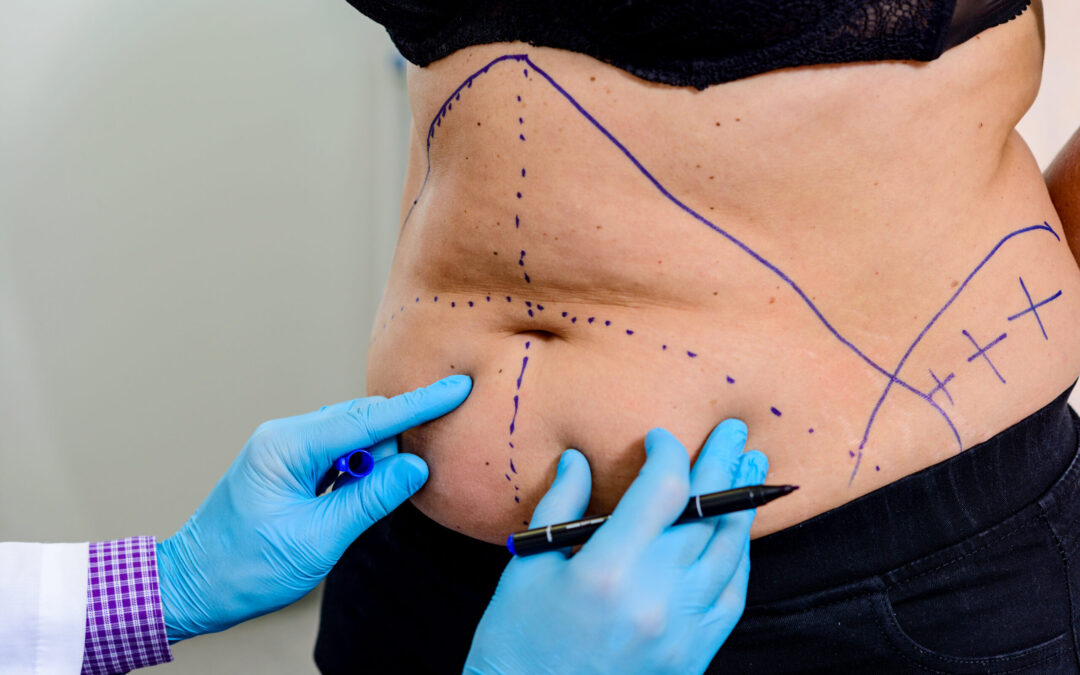
by laraibnaeem2005 | Oct 3, 2025 | Health
Many patients often ask, how soon can you exercise after liposuction surgery when planning for recovery and results. Liposuction is designed to remove stubborn fat and reshape the body, but after the procedure, it is crucial to allow proper healing before resuming physical activity. Jumping back into workouts too soon can impact results and increase risks. Understanding when and how to return to exercise after liposuction ensures smoother recovery, long-lasting outcomes, and better confidence in the final body contour.
What Is Treatment And How It Works?
Liposuction in Dubai(شفط الدهون في دبي) is a surgical procedure that removes fat deposits through small incisions using a thin cannula. The fat cells are suctioned out, permanently reducing localized fat in areas such as the abdomen, thighs, arms, and back. The treatment works by reshaping the body rather than serving as a weight loss solution. Since liposuction involves incisions and internal healing, the body requires adequate rest before engaging in strenuous activities. Exercise too early after the procedure can strain tissues, delay healing, or cause complications like swelling and bruising.
Importance Of Treatment:
The importance of liposuction lies in its ability to contour areas resistant to diet and exercise. For many, it delivers long-term improvements in body proportions and enhances self-confidence. However, the success of liposuction depends not only on the surgery but also on proper aftercare, which includes resuming exercise at the right time. Physical activity plays a vital role in maintaining results, as it helps prevent weight gain and supports muscle tone. Following a structured timeline for returning to exercise ensures both safety and effectiveness of the treatment outcomes.
Types Of Treatment:
Liposuction comes in different forms, each influencing the recovery process slightly:
-
Tumescent Liposuction: Uses fluid injection to make fat removal easier and reduce bleeding.
-
Ultrasound-Assisted Liposuction (UAL): Uses ultrasound waves to liquefy fat for smoother extraction.
-
Laser-Assisted Liposuction (LAL): Uses laser energy to melt fat and stimulate some skin tightening.
-
Power-Assisted Liposuction (PAL): Uses a vibrating cannula for efficient fat removal with less trauma.
Although all types require recovery before exercise, some methods that involve energy-assisted devices may reduce bruising and speed up healing. Still, light walking is usually recommended within days, while moderate to intense workouts should wait until full healing is confirmed.
Preparation And Aftercare:
Preparing for liposuction includes following health guidelines, maintaining a stable weight, and avoiding smoking or medications that affect healing. After the surgery, aftercare is critical in determining when exercise can be resumed. Typically:
-
First few days: Light walking helps circulation and reduces clot risks.
-
First 2 weeks: Avoid heavy lifting or cardio, as tissues are still fragile.
-
After 4 to 6 weeks: Most patients can return to moderate workouts once swelling decreases.
-
After 6 to 8 weeks: Intense training and high-impact exercise can usually be resumed with approval.
Wearing compression garments, staying hydrated, and eating a balanced diet also support recovery. Exercise should always be reintroduced gradually to avoid setbacks.
Ideal Candidate:
The ideal candidate for liposuction is not only someone seeking fat reduction but also an individual committed to maintaining results with healthy habits, including exercise. Candidates should be in good health, have realistic expectations, and understand that liposuction is not a substitute for weight loss. People who already follow an active lifestyle before surgery often recover faster and adapt better to resuming exercise post-treatment. The best candidates recognize the importance of balancing recovery time with long-term fitness goals.
How To Choose A Right Clinic?
Selecting the right clinic plays an important role in determining recovery and guidance about returning to exercise. A reliable clinic provides detailed aftercare instructions, sets realistic timelines for physical activity, and offers tailored advice based on the type of liposuction performed. Patients should look for clinics that emphasize recovery planning, provide follow-up care, and explain the gradual steps for safely resuming exercise. This ensures that patients achieve their desired body contour without compromising safety during the healing process.
Risks:
Exercising too soon after liposuction increases risks of complications. Potential issues include swelling, bleeding, prolonged bruising, or damage to healing tissues. Strain from heavy workouts can also cause uneven results or fluid buildup. Risks are minimized by following recovery instructions carefully and introducing physical activity in stages. Each person heals differently, so rushing back to exercise without proper clearance can interfere with the final results and overall safety of the procedure.
Benefits:
The benefits of resuming exercise after Liposuction Surgery( جراحة شفط الدهون) are significant when done at the right time. Physical activity helps maintain fat loss, enhances circulation, boosts energy, and improves muscle tone. Gradual workouts also support mental well-being, reducing stress and promoting confidence in the new body shape. Combining liposuction with a consistent fitness routine ensures longer-lasting results, as fat cells removed during the procedure are permanently gone, but lifestyle habits determine whether new fat develops. Exercise also keeps the skin firmer and helps the body adjust to its new contours.
Faqs:
When can I start walking after liposuction?
Light walking is usually encouraged within a day or two to promote circulation.
When can I return to the gym after liposuction?
Most patients resume moderate workouts after 4 to 6 weeks, depending on recovery progress.
Can exercise too soon affect my results?
Yes, heavy exercise early can cause swelling, bruising, and uneven healing.
Will I lose more fat if I exercise immediately?
No, the fat removed is permanent, but early exercise does not accelerate results and may harm recovery.
Do compression garments affect workouts?
Yes, wearing them during early recovery helps control swelling while doing light activities.
Conclusion:
The question how soon can you exercise after liposuction surgery is one of the most common concerns for patients planning their recovery. While light walking is encouraged almost immediately, more intense workouts should wait several weeks until healing is complete. Liposuction permanently removes fat, but exercise is vital to maintaining results and enhancing body shape over the long term. By following a gradual and structured return to physical activity, patients can protect their investment in the procedure, enjoy a smooth recovery, and achieve long-lasting confidence in their new contours.
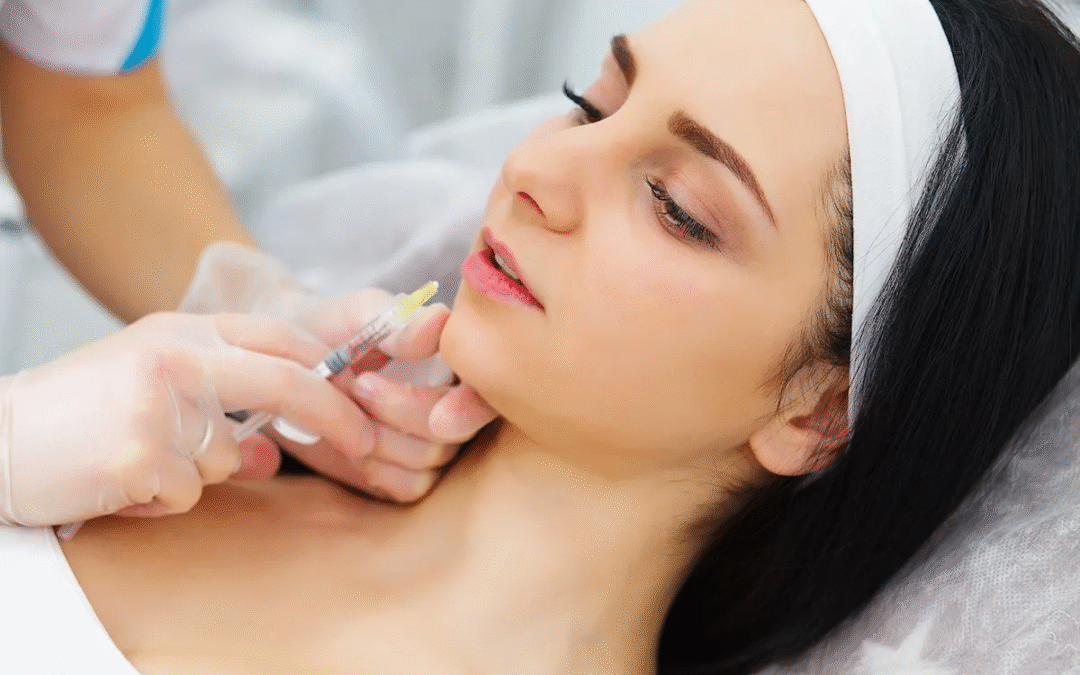
by laraibnaeem2005 | Oct 2, 2025 | Health
Hydration is one of the most important factors for youthful and radiant skin, and many people wonder, do skin boosters really improve skin hydration? With modern advancements in aesthetic treatments, these injectables have become a popular option for individuals struggling with dryness, dullness, and premature aging. By delivering nourishing ingredients directly into the skin, they aim to restore elasticity and moisture levels, providing long-lasting glow and improved skin texture. This article will explore how the treatment works, its importance, types, preparation and aftercare, ideal candidates, and frequently asked questions.
What Is Treatment And How It Works?
Skin Booster Injections in Dubai(حقن معزز البشرة في دبي) are micro-injections designed to infuse hydration deep within the dermis. Unlike traditional moisturizers that only address the skin’s surface, they deliver vital components like hyaluronic acid directly beneath the skin. The treatment works by:
-
Attracting and locking in moisture
-
Stimulating collagen production
-
Enhancing overall skin elasticity
The result is smoother, plumper, and healthier skin. The difference lies in the fact that topical creams often cannot penetrate deeply enough, while boosters work from within, addressing hydration at its core.
Importance Of Treatment:
The importance of this treatment lies in its ability to restore the natural balance of skin hydration. Factors like aging, harsh weather, pollution, and lifestyle habits can significantly reduce the skin’s ability to retain moisture. Proper hydration helps with:
-
Maintaining skin firmness
-
Reducing fine lines and wrinkles
-
Preventing dull and tired appearance
-
Supporting skin healing and repair
By focusing on hydration from within, boosters are not just cosmetic—they also enhance skin health in the long term.
Types Of Treatment:
There are several types of skin boosters available, tailored to different concerns and skin types. Some of the most common include:
-
Hyaluronic Acid Boosters: Specifically target hydration by binding water molecules.
-
Collagen-Stimulating Boosters: Focus on improving firmness and elasticity.
-
Customized Boosters: Contain vitamins, amino acids, and antioxidants to improve overall skin quality.
Each type offers unique benefits, and the choice often depends on whether the primary concern is dryness, aging, or overall skin rejuvenation.
Preparation And Aftercare:
Preparing for a booster session is relatively simple but important for best results. Recommended steps include:
-
Avoiding alcohol and blood-thinning medications before the session
-
Keeping the skin clean and makeup-free on treatment day
-
Staying hydrated to enhance results
Aftercare is equally crucial and includes:
-
Avoiding strenuous exercise for 24 hours
-
Not touching or massaging the treated area
-
Using gentle skincare products
-
Applying sunscreen regularly
Following these steps ensures optimal hydration improvement and reduces any temporary side effects like redness or mild swelling.
Ideal Candidate:
Not everyone requires intensive hydration treatments, so who is an ideal candidate? Skin boosters are most effective for individuals who:
-
Struggle with dry or dehydrated skin
-
Notice early signs of aging like fine lines
-
Experience dullness or loss of elasticity
-
Have uneven skin texture
-
Want to maintain youthful glow proactively
Both younger and older individuals can benefit, as hydration is essential at every stage of life.
How To Choose A Right Clinic?
Choosing the right place for treatment is critical to ensure safety and best outcomes. Consider the following factors:
-
Reputation and qualifications of practitioners
-
Sterilization and safety measures
-
Availability of different booster options
-
Use of genuine, approved products
-
Positive patient reviews and testimonials
A careful choice ensures the treatment is effective and minimizes any potential risks.
Risks:
While the treatment is generally safe, like any injectable, there can be some risks. These include:
Most side effects subside quickly when aftercare is properly followed.
Benefits:
The benefits of Skin Booster Injections(حقن معزز البشرة) are numerous, making them a preferred treatment for hydration and rejuvenation:
-
Intense and long-lasting hydration
-
Improved elasticity and firmness
-
Reduction of fine lines and wrinkles
-
Brighter and healthier skin tone
-
Natural and subtle results
The treatment not only enhances appearance but also contributes to skin vitality from within.
Faqs:
How long do results last?
Results often last between 6 to 12 months depending on skin type and lifestyle.
Is the treatment painful?
Discomfort is minimal, often described as a slight pinch.
When can results be seen?
Many notice improved hydration within weeks, with continued improvement over time.
Can all skin types benefit?
Yes, skin boosters are safe and effective for all skin types.
Are multiple sessions needed?
Depending on skin needs, 2 to 3 sessions may be recommended for best results.
Conclusion:
So, do skin boosters really improve skin hydration? The answer is yes. By delivering essential hydration and nutrients directly beneath the skin, they target dryness, dullness, and aging signs more effectively than topical methods. With proper preparation, aftercare, and professional administration, these injections can help achieve long-lasting radiance, improved elasticity, and youthful glow. For anyone struggling with persistent dehydration or looking for a proactive anti-aging solution, skin boosters remain one of the most reliable treatments available today.
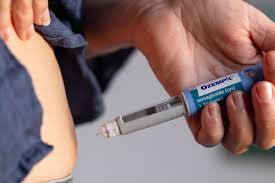
by laraibnaeem2005 | Oct 1, 2025 | Health
A common question many people ask is can Ozempic injection be used for weight management only. Originally developed for controlling blood sugar levels in individuals with type 2 diabetes, this injectable treatment has also shown significant results in reducing appetite and supporting weight loss. As a result, its role in weight management has become a major topic of discussion. In this article, we will explore how the treatment works, its importance, different types, preparation and aftercare, ideal candidates, benefits, risks, and frequently asked questions to provide clarity for anyone considering this option.
What is treatment and how it works?
Ozempic injection in Dubai(حقن أوزمبيك في دبي) is a GLP-1 receptor agonist that mimics natural hormones in the body. It slows digestion, increases feelings of fullness, reduces appetite, and helps regulate insulin release. When individuals ask can Ozempic injection be used for weight management only, it’s important to note that while the primary purpose is diabetes management, weight control is a well-recognized benefit. By lowering food intake and helping with long-term appetite regulation, it supports individuals aiming to reduce weight in a sustainable way.
Importance of treatment:
The importance of this treatment lies in its dual action—helping manage blood sugar while offering noticeable weight reduction benefits. People who struggle with traditional weight loss methods often wonder if the injection can be used solely for that purpose. While its medical role is broader, studies highlight that it effectively reduces body weight when used consistently. For those struggling with obesity-related risks, this importance is heightened since weight loss can improve overall health, energy, and lifestyle.
Types of treatment:
When it comes to can Ozempic injection be used for weight management only, understanding dosage variations is crucial. Different treatment plans are based on weekly doses, gradually increased for better tolerance. While the injection itself remains the same, the purpose behind it may differ. For some, it’s focused on blood sugar regulation, while others seek it primarily for weight loss. The type of use depends on personal goals, health background, and suitability. Regardless of the reason, consistency and proper monitoring ensure best results.
Preparation and aftercare:
Preparation involves proper storage, choosing a specific day each week, and ensuring the injection is administered at the same time for routine. Aftercare includes monitoring for mild side effects like nausea, rotating injection sites, and maintaining hydration. For people asking can Ozempic injection be used for weight management only, it’s important to understand that preparation and aftercare remain the same regardless of the purpose. The key is to follow structured guidelines to ensure long-term adherence and maximize results.
Ideal candidate:
The ideal candidate includes individuals with type 2 diabetes or those who struggle with excess weight and appetite regulation. Those specifically considering whether can Ozempic injection be used for weight management only should recognize that while it can support weight goals, suitability depends on individual health needs. People with lifestyle-related weight gain or obesity-related concerns may benefit most, provided they are consistent with their weekly schedule and motivated to pair treatment with healthy habits.
How to choose a right clinic?
When exploring can Ozempic injection be used for weight management only, choosing the right clinic is essential. A reliable provider will explain dosage, effects, preparation, and aftercare clearly. They can guide patients on integrating injections into their lifestyle and track progress effectively. The right environment helps ensure safety, confidence, and long-term success, especially for individuals seeking results beyond blood sugar control.
Risks:
Risks are generally mild but can include nausea, digestive discomfort, or appetite changes. For those considering can Ozempic injection be used for weight management only, it’s important to understand that risks are not tied to the reason for use but rather the body’s response to the medication. Consistency, proper administration, and monitoring side effects help reduce risks and ensure that treatment remains safe.
Benefits:
The benefits extend beyond managing diabetes, as many individuals experience noticeable weight loss, improved energy levels, and better lifestyle balance. Asking can Ozempic injection(حقن أوزمبيك) be used for weight management only is valid, and the answer is yes—while its original purpose is broader, it can be highly effective for weight-focused goals. By helping regulate appetite and reducing cravings, it supports long-term results that improve overall well-being.
FAQs:
-
Can Ozempic be prescribed only for weight management?
-
Yes, though originally designed for diabetes, it is now widely recognized for weight benefits.
-
How soon will I see results?
-
Many notice changes within the first few weeks of consistent use.
-
Do I need to follow a diet?
-
Pairing it with healthy eating and activity improves outcomes.
-
Are side effects common?
-
Mild digestive discomfort may occur but often improves over time.
-
Is it safe for non-diabetic individuals?
-
Yes, when used under proper guidance for weight-related goals.
Conclusion:
To conclude, the question can Ozempic injection be used for weight management only highlights a growing interest in its broader benefits. While initially created for diabetes management, it has proven to be a powerful option for individuals seeking effective and sustainable weight loss. The key is consistency, proper preparation, and long-term commitment to maintaining healthy habits. Whether used for blood sugar regulation, weight loss, or both, this treatment provides lasting value when integrated into a structured routine.





